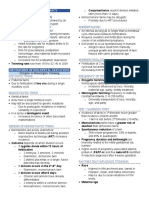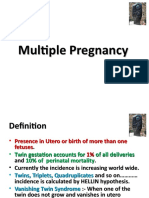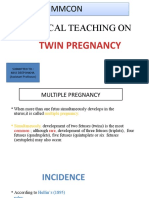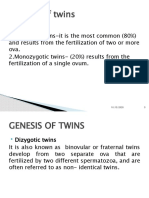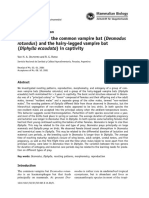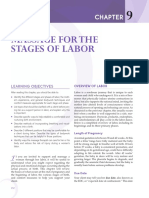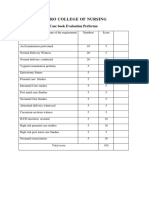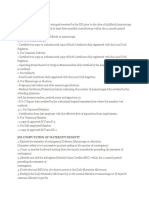0% found this document useful (0 votes)
25 views13 pagesAssignment On Multiple Pregnancies
The document provides an extensive overview of multiple pregnancies, primarily focusing on twins, including definitions, types, incidence, risk factors, diagnosis, complications, and management strategies. It details the differences between dizygotic and monozygotic twins, the implications of zygosity, and the complications associated with twin pregnancies, particularly in monozygotic cases. Additionally, it outlines antenatal care, dietary recommendations, and specific management protocols during labor for twin deliveries.
Uploaded by
varshasinghh23Copyright
© © All Rights Reserved
We take content rights seriously. If you suspect this is your content, claim it here.
Available Formats
Download as DOCX, PDF, TXT or read online on Scribd
0% found this document useful (0 votes)
25 views13 pagesAssignment On Multiple Pregnancies
The document provides an extensive overview of multiple pregnancies, primarily focusing on twins, including definitions, types, incidence, risk factors, diagnosis, complications, and management strategies. It details the differences between dizygotic and monozygotic twins, the implications of zygosity, and the complications associated with twin pregnancies, particularly in monozygotic cases. Additionally, it outlines antenatal care, dietary recommendations, and specific management protocols during labor for twin deliveries.
Uploaded by
varshasinghh23Copyright
© © All Rights Reserved
We take content rights seriously. If you suspect this is your content, claim it here.
Available Formats
Download as DOCX, PDF, TXT or read online on Scribd
/ 13









